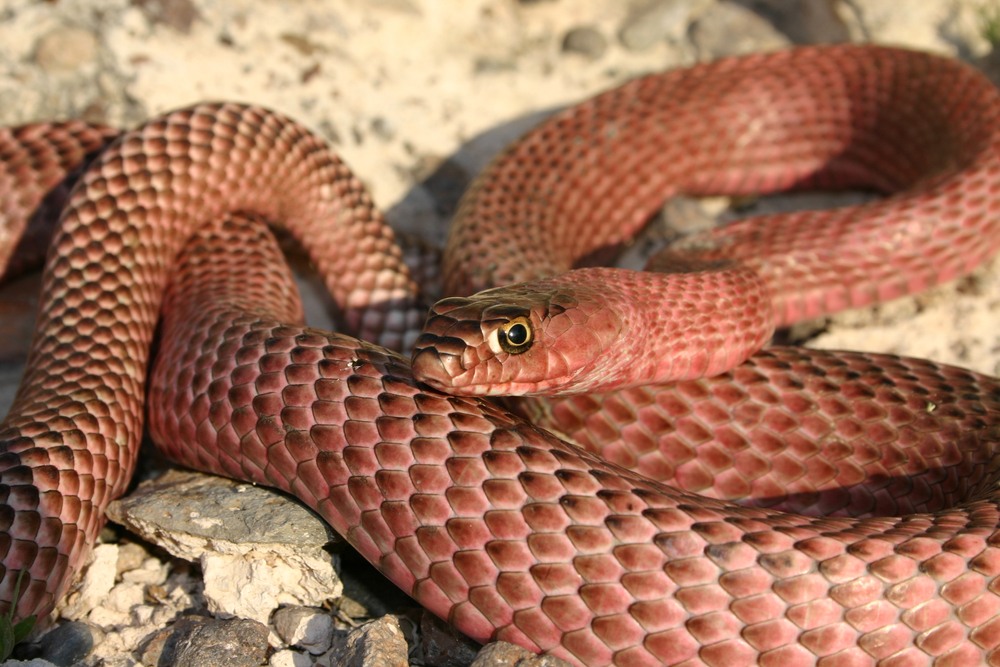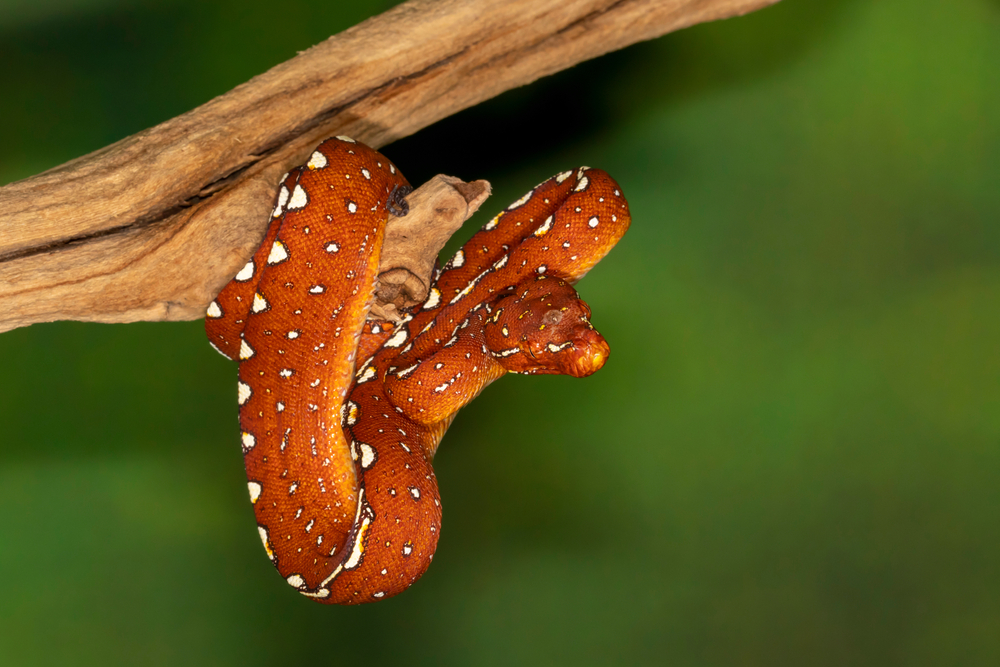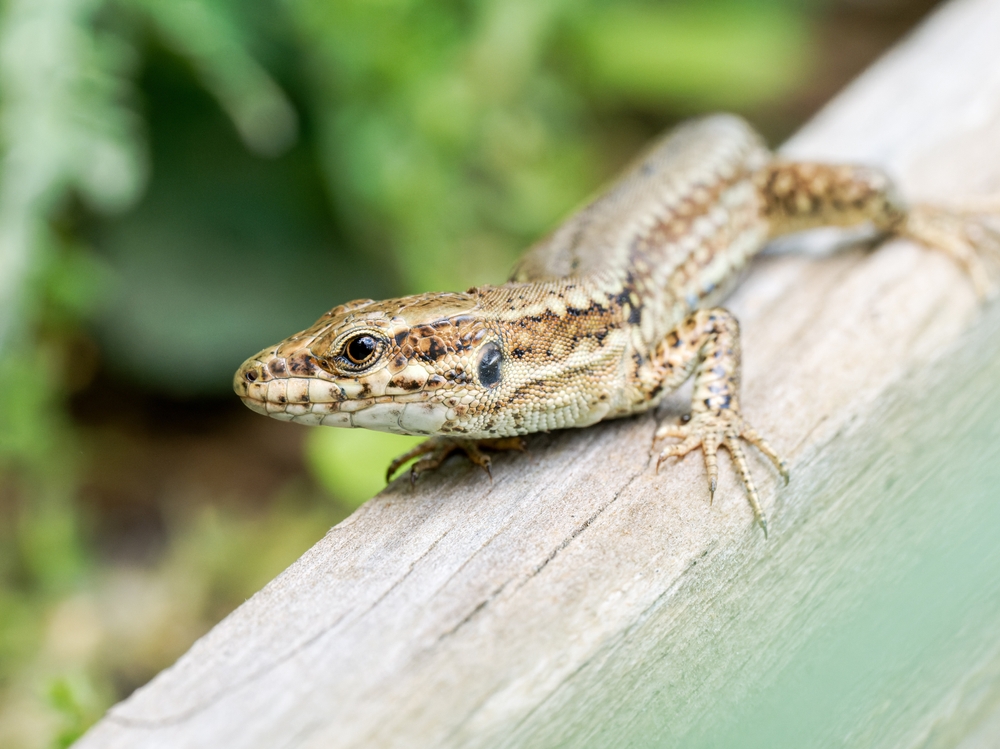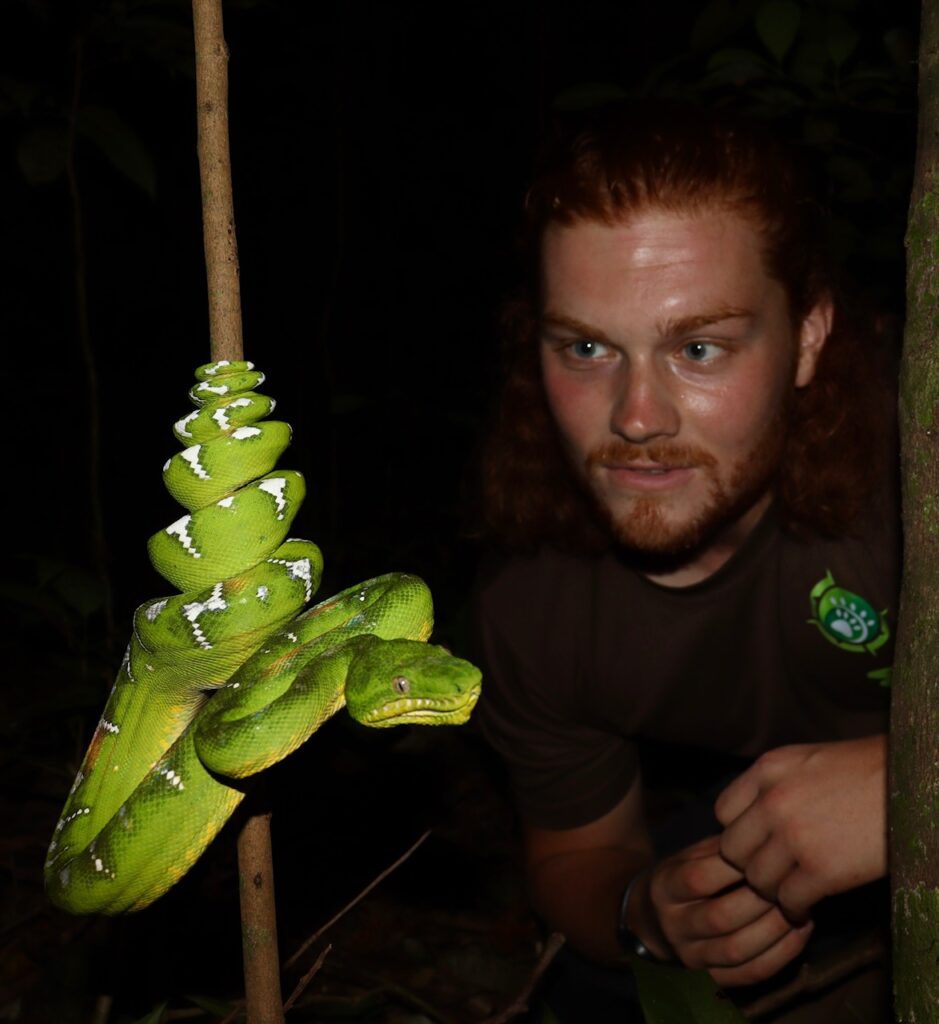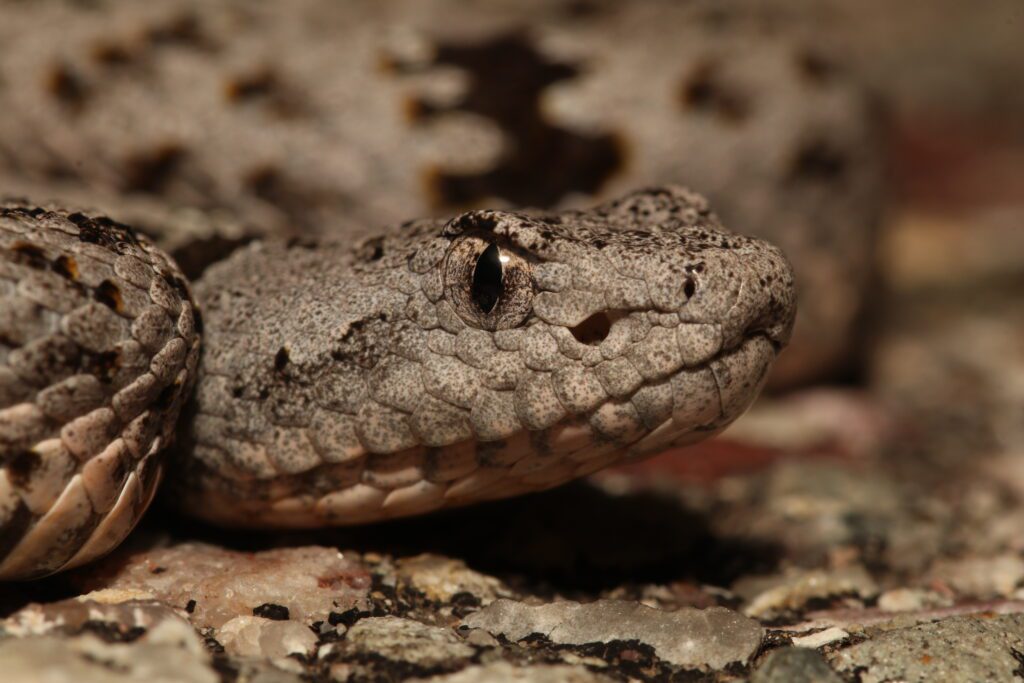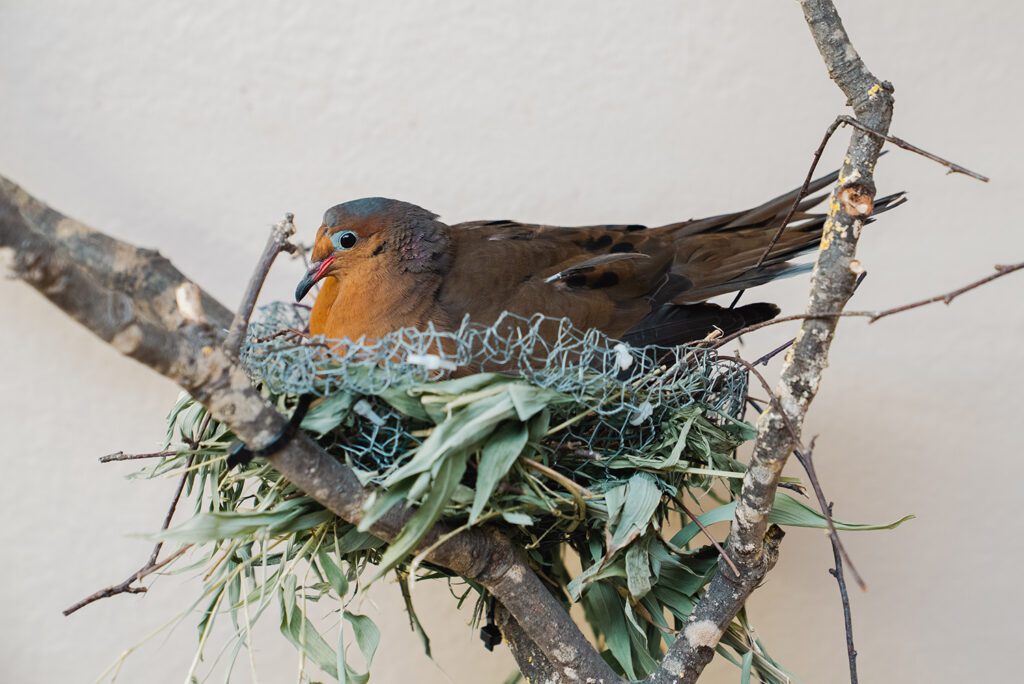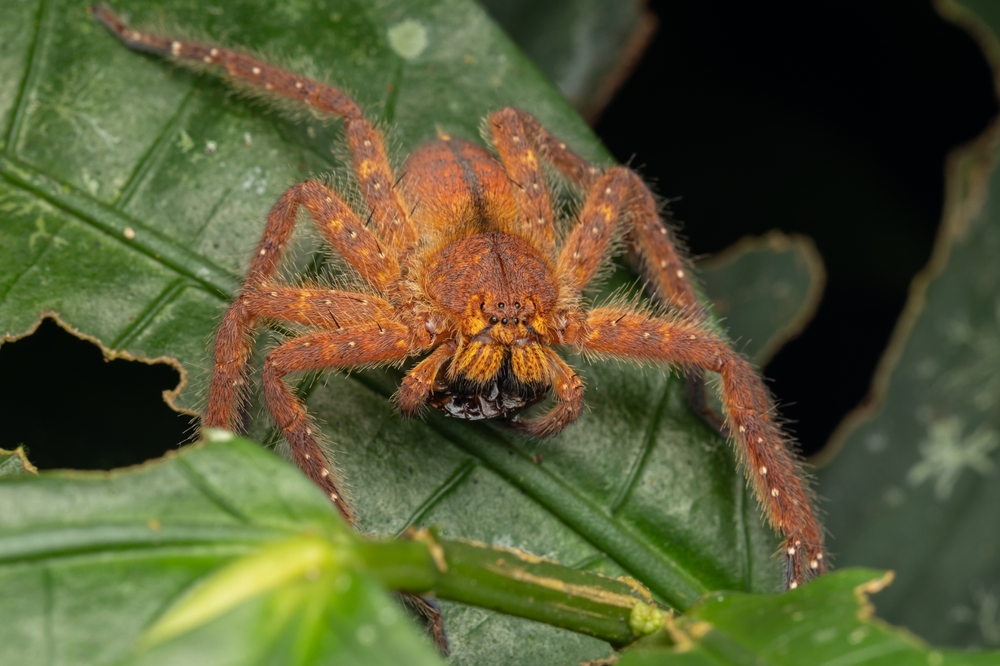The western coachwhip is an incredible snake that is surprisingly rare in UK collections. Expert snake breeder, Francis Cosquieri has been working with the species for many years and details his husbandry and captive breeding strategies for the species in the following article…
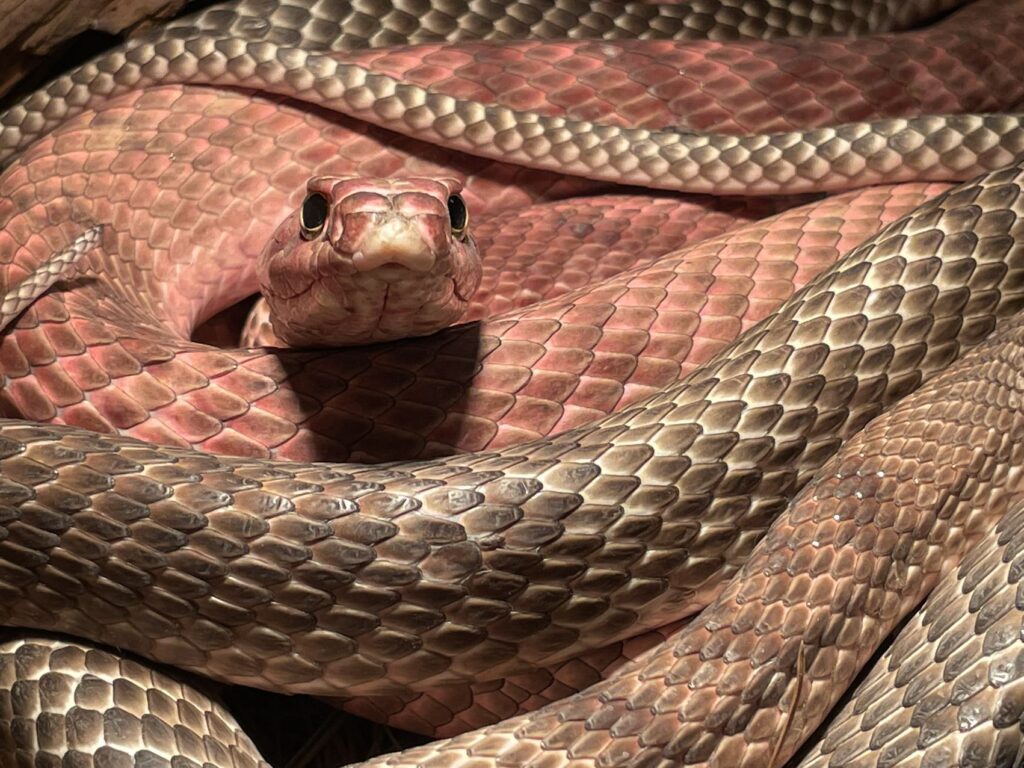
Unlike many keepers nowadays, who would have started their keeping journey by going into a pet shop and buying a placid Corn snake, or Royal python, or perhaps a King snake or Garter snake, my first snake was a large adult Horseshoe whip snake (Hemorrhois hippocrepis) that I caught in Gibraltar in 1987.
In the thirty-seven years since I captured that specimen, not a year has gone by that I have not had Horseshoe whip snakes in my collection. Since then I have kept many other species of whip snake including species from the genera Platyceps, Hierophis and Dolichophis.
It was not until 2014 that I came into contact with the largest and most impressive whip snake of them all – the American Coachwhip (Masticophis flagellum).
The Western Coachwhip (Masticophis flagellum testaceus)
The subspecies of Coachwhip I keep, and the subject of this article, is the Western Coachwhip, Masticophis flagellum testaceus.
While the husbandry information presented here may cater well to other westerly Coachwhip subspecies from hot, dry habitats such as M. f. piceus and M. f. cingulum, care should be taken with the more easterly subspecies such as the nominate form M. f. flagellum, which may have different habitat requirements and thermal needs, and are said to be more difficult in captivity.
The species is called ‘Coachwhip’ because it is said to be ‘as quick as a whip flicked over a horse’s back.’ Its unique and diagnostic scalation also closely resembles a braided lash used by horse drivers and coachmen in olden days (this is the reason my wife likened my first specimen to Indiana Jones’s whip).
There are legends about the snake biting the ground and whipping people to death with its body, or biting its tail and rolling away as a defence mechanism (‘hoop snake’), which are nonsense of course.
The power of these stories and the respect those early herpetologists had for this species is evident in the binomial name: Masticophis derived from the Greek words mastix (= whip) and ophis (=serpent). (‘whip snake’ – easy); flagellum, derived from Latin flagrum or flagellum (=scourge) and very close to the word ‘flagellate’ meaning to flog, cane or whip someone. Already we have an evocative picture of this snake’s imagined behaviour!
‘Testaceus’ is Latin for brick or clay in reference to the earthy reddish-brown colour of the snake.
The Western Coachwhip was described by L. D. Wilson in 1968 thus: ‘A subspecies of Masticophis flagellum characterised by a tan or light brown to pinkish-red dorsal with darker narrow crossbones on the neck and a double row of dark spots on the otherwise immaculate cream belly.’
And by Robert Stabler in 1967 with this wonderfully evocative description, using colour standards and colour nomenclature based on Ridgeway 1912: ‘The dorsal is Dragon’s-blood Red on the nape grading to Light Coral Red posteriorly. The dark crossbones on the neck are near Liver Brown. The venter is Light Coral Red. The spots on the ventral surface of the neck are Dragon’s-blood Red, the remaining spots are yellowish cream. The top of the head is near Hay’s Russet (reddish brown). The anterior edge of each dorsal head scale is lighter (pink). The side of the head is reddish brown and the temporals are outlined with pink. A cream spot is present on the upper preocular. The chin is white with mustard yellow and reddish orange blotching.
A. I. Ortenberger in 1928 described three main colour forms of Western Coachwhip:
I. “A very light brown ground colour with no indication of a pattern.”
II. “The same general light brown ground colour with numerous narrow, darker cross bands, which extend for a considerable portion of the body length.”
III. “Few wide, dark cross bands (ten to fifteen scales in width) on either a light brown or a dark brown ground colour.”
Further, the presence of maroon to red specimens across the range was noted since at least 1823 and such animals are known from Trans-Pecos, Texas; in Arkansas River valley, Colorado; Big Bend National Park, Texas, eastern New Mexico; Tucumcari, Guadalupe county; NW Roswell, Lincoln county; Arizona; and Baca, El Paso, Fremont, Kiowa, Las Animas, Otero south-eastern Colorado.
At first the ‘Red Racer’ was assigned its own subspecies but the presence of bright red specimens across the range in disjunct populations alongside normally-coloured individuals means they are a colour form and not tied to any particular habitat or population.
This subspecies is distributed across the South-central United States; from western Kansas, extreme south-western Nebraska and eastern Colorado, south through New Mexico and all of Texas except for the eastern Pine forest. In Mexico the Western Coachwhip occurs in Eastern Coahuila, Nuevo León, Tamaulipas, eastern San Luis Potosí and extreme northern Veracruz.
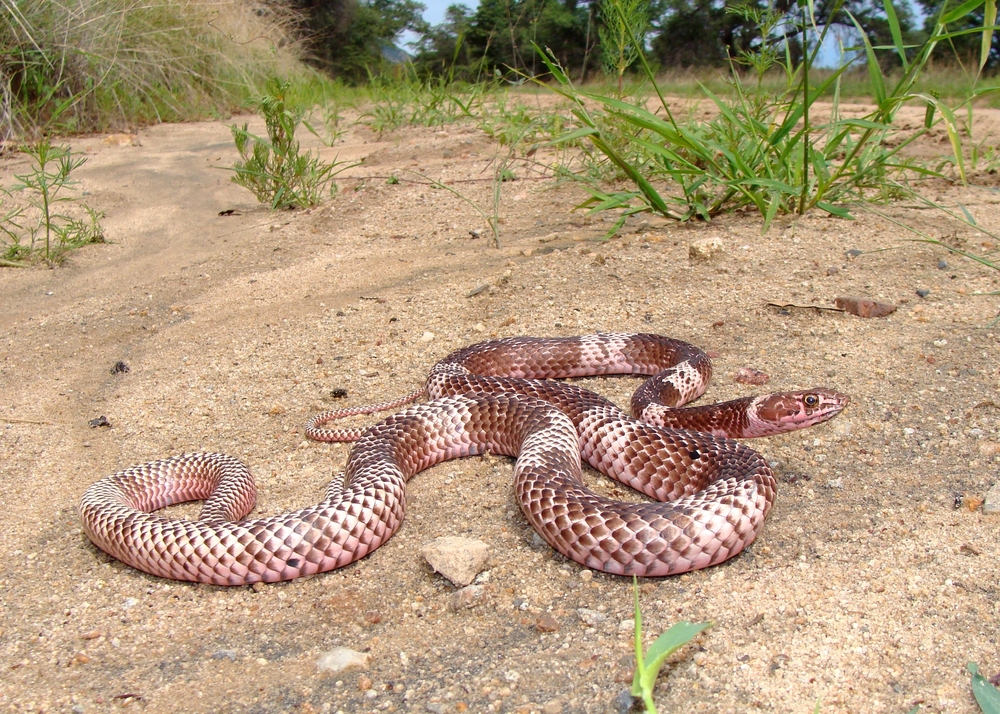
Eastern Coachwhip basics
Coachwhips are not beginner snakes. They are nowhere near as difficult to keep as many old works of literature have stated, but present some unique challenges for the snake keeper. They are unforgiving if kept in small enclosures, at lower than ideal temperatures, without significant light and overhead heat. They may survive for a while, but eventually they will decline in health.
On the other hand, if you care for them from the outset with a mindset of keeping a lizard rather than a snake, you will do much better. These are animals whose care requirements are far closer to something like Bearded dragons or Monitor lizards and if approached with this mindset, pose little challenge.
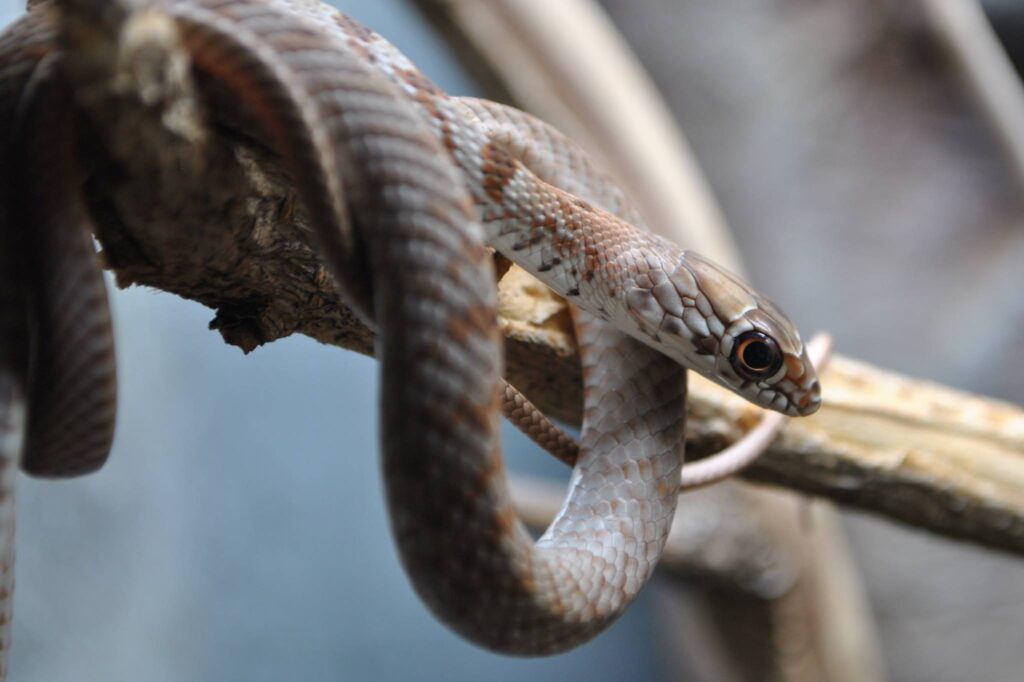
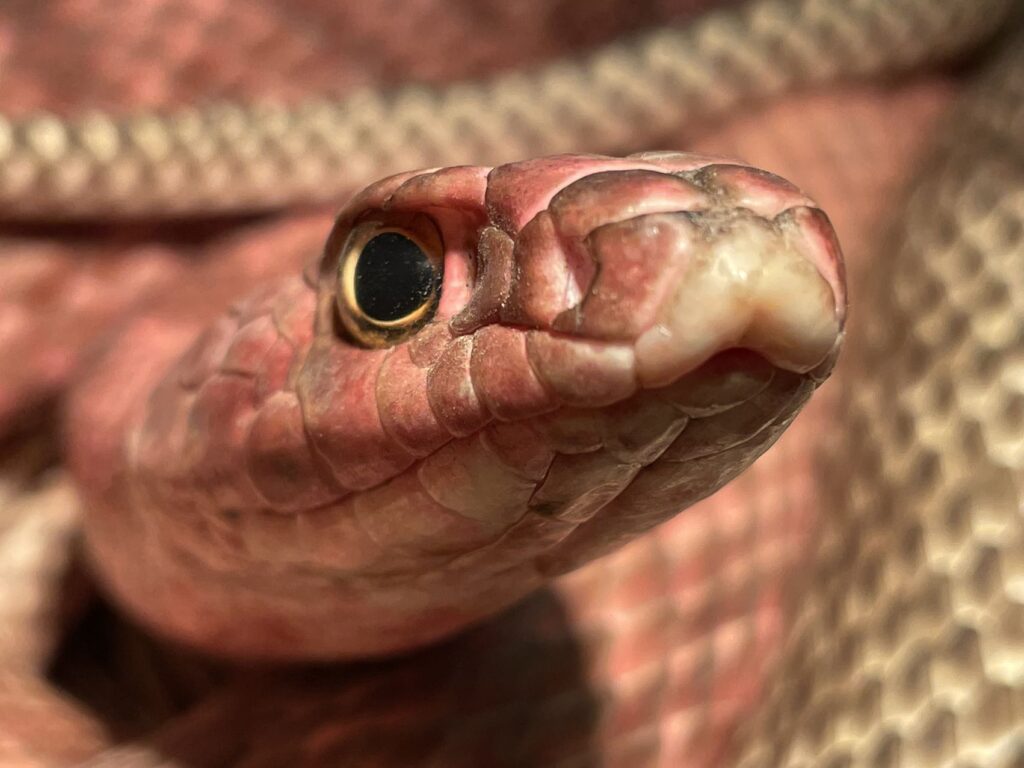
Housing Eastern Coachwhips
Coachwhips are extremely active snakes, with one of the largest home range sizes known among snakes – up to 102.9 ± 28 ha. During the active season they move between 27 metres to 97 metres in a single day. Coachwhips have been clocked as the fastest snakes in North America and can reach over 4mph/ 6.44 km/h.
Despite this activity level, Coachwhips in the wild have relatively short foraging and movement periods, averaging around four hours per day. During this time, they search ceaselessly for prey then retire to bask or digest. They hunt by raising the front 30% of their bodies up to get a good look at their surroundings, and actively pursuing and chasing down prey when they spot it.
Obviously any captive enclosure offered can only be a tiny fraction of this but it goes without saying that small, cramped containers simply won’t do at all and any discussion on minimum size is going to start with ‘length of the enclosure should at least equal or exceed the length of the snake’ and move up from there. This is one species where ‘bigger really is better.’
I quarantined my snakes in 48x18x18” terraria for the smaller specimens and 48x24x24” for the larger ones. For long term care, you will need something far bigger. Over the years I have steadily progressed my Western Coachwhips from 4x2x2s to 6x2x2s and 6x2x3s all the way up to 8×3′ enclosures. These are not snakes you can stick in a drawer. The dimensions given above are frankly bare minimum for these snakes in the long term. (Although they are hardy snakes and undoubtedly will survive and feed in smaller enclosures for the short term).
While Western Coachwhips are in general terrestrial snakes, they climb quite a lot to hunt birds and their nests, to bask and to escape predators. They appreciate some height and will climb off the ground if they can. I have found that if given at least 36” of height, they will spend a lot of time off the ground basking and watching comings and goings. I placed a tangle of branches from a fruit tree and the snakes immediately hid within them.
Security is also of paramount importance, and can directly impact whether you succeed or fail with these snakes. Western Coachwhips are not ‘secretive’ – they spend much of their time in the open. However, they are very alert and perceptive to anything moving outside their enclosure; the slightest disturbance can scare them into hiding or stress them out. In worst case scenarios, too much movement from people or other pets can put them off their food.
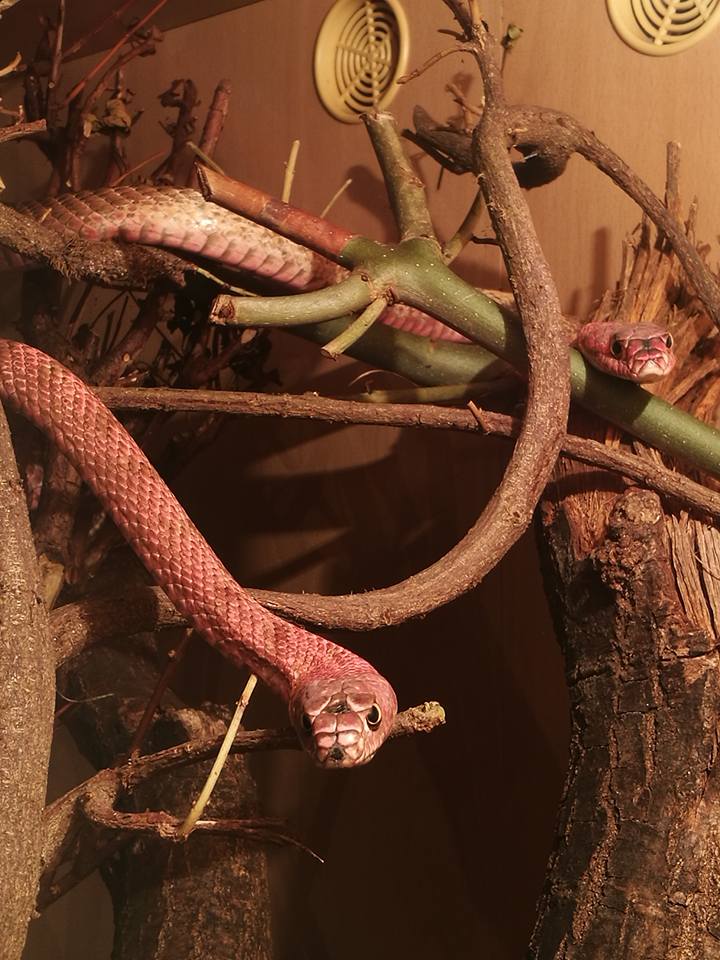

Heating Western Coachwhips
I have seen people say they keep their Western Coachwhips at similar temperatures to other Colubrids, with 30-32℃ (86F-89F) basking surface temperatures. This is pitiful and in no way reflects what these snakes want or need (at least, not Western Coachwhips).
Western subspecies need much higher basking surface temperatures. When I first started keeping these snakes in 2014, I also started out keeping mine at a fairly standard thermal gradient from about 20℃/ 68F to 34℃/ 93.2F and the snakes seemed hardy enough and ate well. Then, I got friends over in the States to take more detailed readings of basking sites in the field and they reported Western Coachwhips using stupidly high surface temperatures – up to 70℃/ 158F.
Western Coachwhips only become active at temperatures of 23℃ (73.4F) or higher. Remember that four-hour forage period I mentioned earlier? It tends to coincide with midday and the hottest hours on either side. These are animals that are adapted to being active when other reptiles cannot tolerate the heat; they hunt down lizards and other snakes when they are taking refuge from the sun and the Western Coachwhips are most active!
Perhaps in captivity we need not go as extreme as 70C/158F – and indeed that would probably be dangerous in the confines of a terrarium – but certainly surface temps of 50-55C (122F-131F) are not unreasonable. I tried raising the basking surface temperatures on the stones beneath the basking lamps to 55c/ 131F and the difference in activity and basking behaviour in my Western coachwhips was immediately obvious.
Obviously, the basking surface should be limited to one side of the enclosure, and only surface temperatures should be as high as stated (NOT ambient temperatures or you will cook your snake in minutes!) there should be a thermal gradient with ambient temperature down to around 23℃/ 73.4F at the cool side.
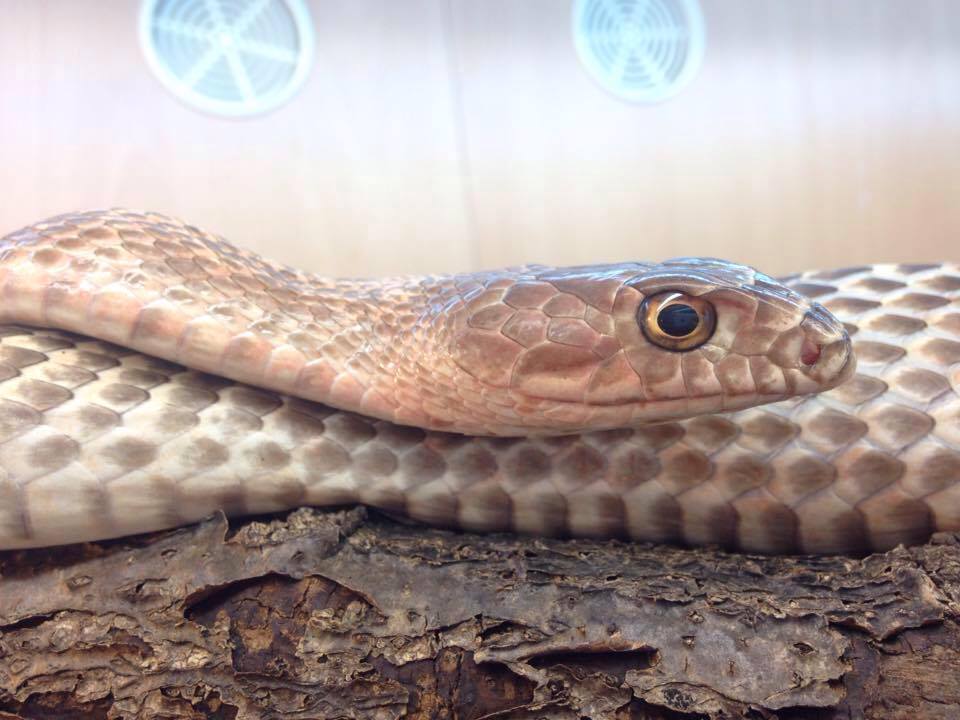
Lighting Western Coachwhips
As heliophilic snakes, active in the hottest parts of the day, UV Indices at basking sites for this species in the wild have been recorded from UVI 3 all the way up to a blistering UVI 15. Coachwhips have specially adapted scales that block out almost all UVB as they spend their lives out in the hot sun. This means in captivity you cannot skimp with a shade dweller or low level UVB – they need a powerful UV source above the basking zone. I use a couple of T5 bulbs and I aim for a maximum UV Index of around 4.
I also provide a lot of high-quality white light, as I like the enclosure to be as bright as possible. This most often will take the form of LEDs. In an 8′ enclosure I have two halogens or metal halides for heat; a Sansi LED for bright light; two T5s for UVB; an LED bar for overall lighting. (These are NOT cheap snakes to house!)
Feeding Western Coachwhips
In the wild, Coachwhips are known to take a very wide variety of prey, everything from mice and cotton rats, chipmunks, young ground squirrels and rabbits, various small birds and their chicks, baby tortoises and turtles, and snakes and lizards of all sizes including rattlesnakes and even kingsnakes. However, their main prey is lizards.
In captivity, well acclimated Western Coachwhips should not give any problems at all when it comes to eating. They will take frozen/ thawed rodents, chicks, small eggs and anything else the keeper offers without hesitation. Indeed, fully acclimated individuals will dive out of their cages to grab any perceived prey and will wait excitedly at the door of their cage when they see their keeper approaching with food.
Western Coachwhips have an incredibly fast metabolism for a snake. They will digest prey in 12-18 hours and excrete and be ready for more. An adult can easily take six adult mice per week and still be hungry. I like to vary up prey size and type as much as possible, but the maximum space between meals should not be more than 7 days and the snakes can be fed little but often, every few days if required.
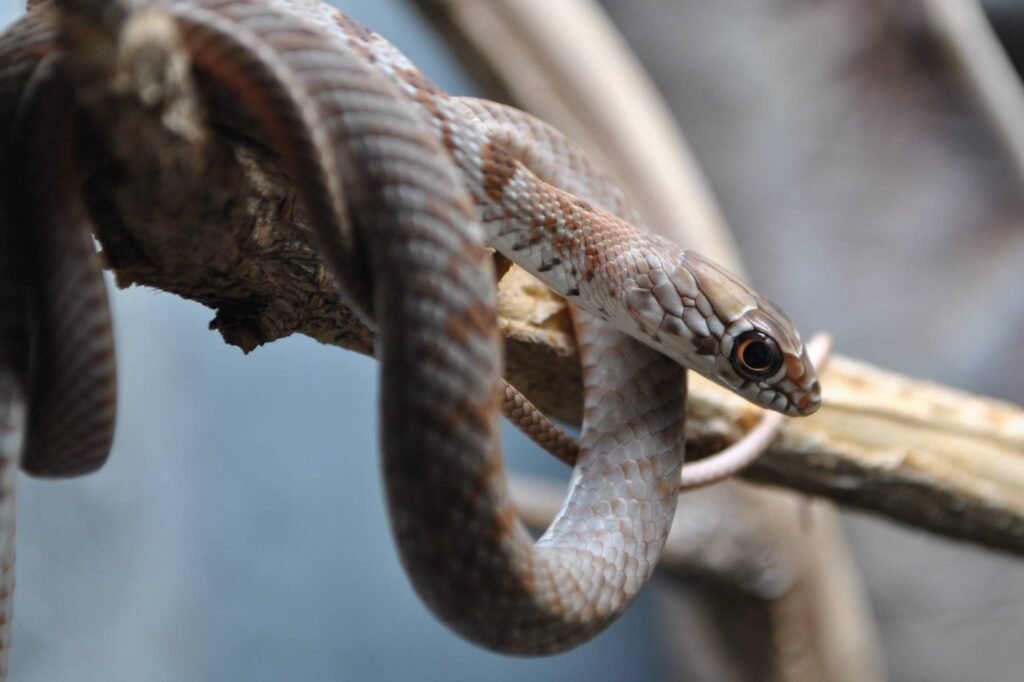
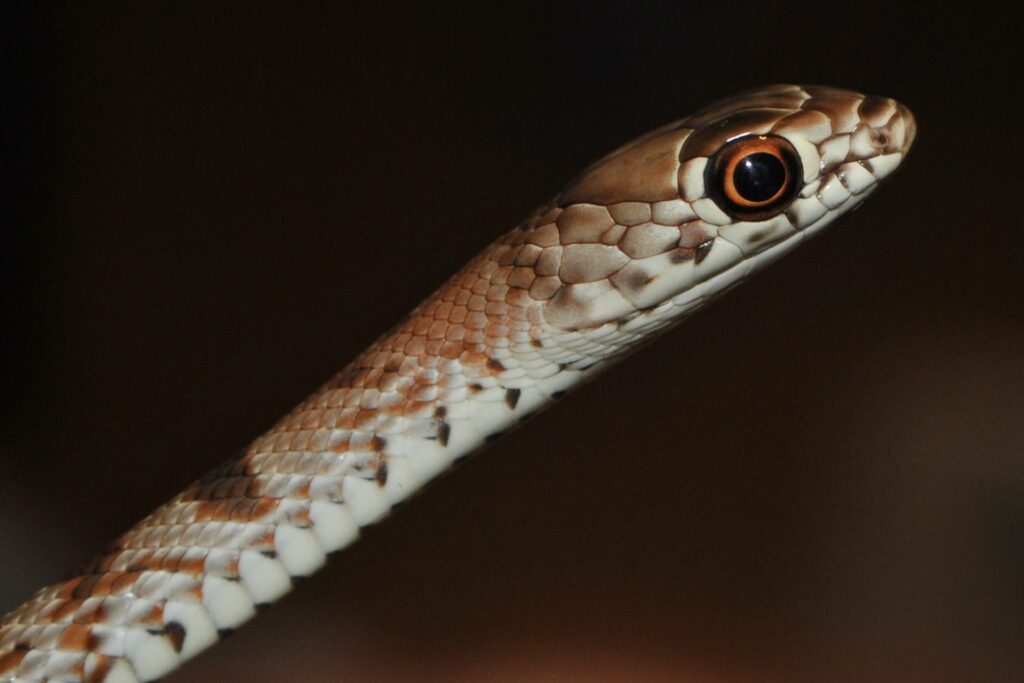
Cohabitation of Western Coachwhips
Cohabitation is a contentious topic at the best of times and never more so than when it concerns snakes that regularly eat other snakes and are therefore perfectly capable of consuming one another. Originally, I strictly kept each Western Coachwhip singly but over time I began to wonder. They would need to be introduced to attempt breeding, after all. It was with some trepidation that I put the first pair together… and I was oddly surprised. Rather than initiate any kind of fight or try to eat one another, the male and female seemed to pair bond and could be seen spending most of their time coiled together, with heads together, or basking together.
I have since been told by herpers used to seeing them in the field that in the breeding season at least, a pair of Western Coachwhips will remain together for an extended period and can often be seen basking together. The way these snakes act is almost analogous to some of the Psammophiid snakes from North Africa, with which they share a lot in common in terms of behaviour and activity (but to which they are not related).
My fears allayed, it was not long before I made the decision to group up all my animals. This resulted in the 8 animals I had being sorted into two 1.2 trios and a 1.1 pair!
The only potential issues with cohabiting this species come around feeding time. The snakes get so excited and strike-happy that they will all try to grab any prey items you offer them. It pays to make sure you have several available and ready so that you can make sure you give them something to bite onto before they start trying to steal food from their cage-mates.
It goes without saying that this species, once fed, should be separated out for a few hours while they calm down, otherwise they may fight as they can still smell food and are in a heightened state of alertness or ‘feeding mode.’
Following these measures I have had no problems cohabiting this species, other than the odd non-consequential scuffle during feeding time, and they seem to actually do better kept together than singly providing the specimens are a similar size.
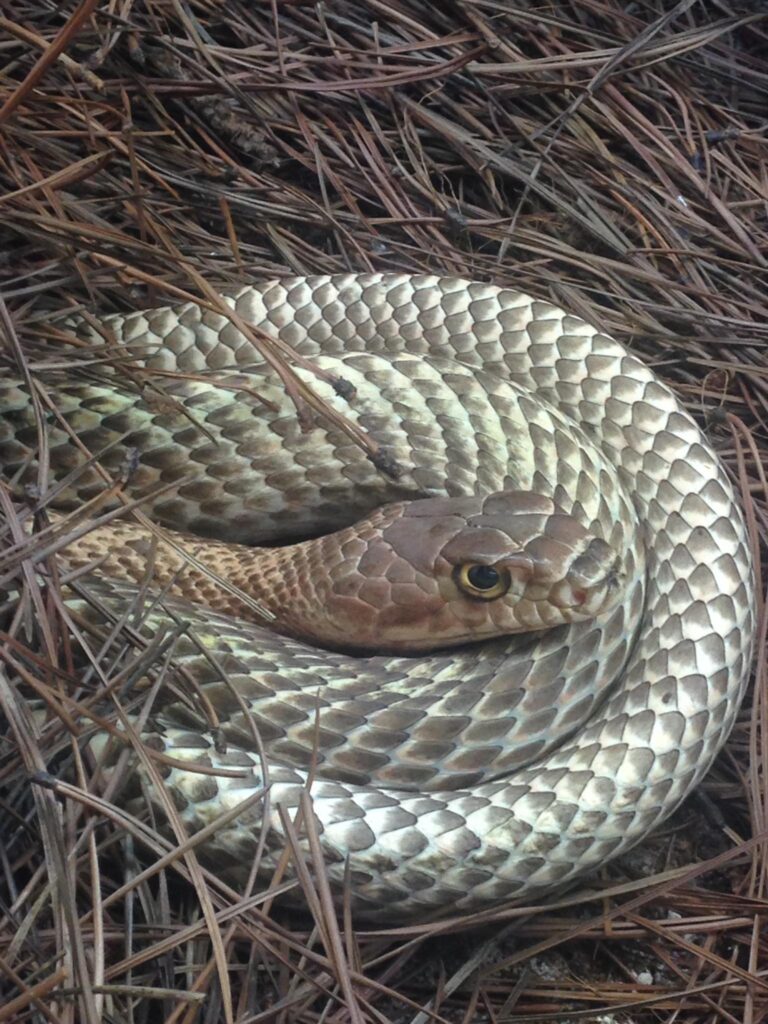
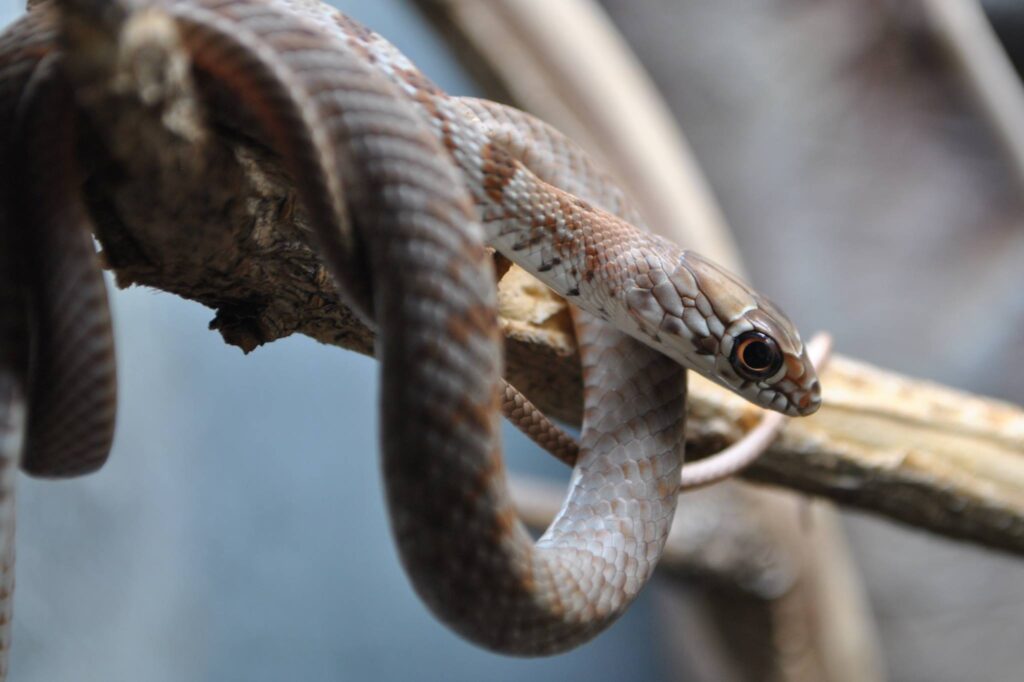
Breeding Western Coachwhips
After a short period of cooling, my Western Coachwhips mate between late March and early April and lay between the end of April to June. My earliest egg deposition has been from 30 April to 2 May, and latest June 15th.
I have learned the ONLY time healthy Western Coachwhips refuse a meal is just before they are due to lay. The female sheds and lays straight after Mine always seem to ignore the egg deposition boxes I provide and either lay the eggs in the open or beneath a piece of slate; It has been suggested they may be crevice nesters and require tight spaces to lay.
Female Western Coachwhips can hide the fact they are gravid remarkably well but when finished laying they look completely deflated and need much food in the following weeks (every 2-3 days) to put that weight back on.
Out of five clutches I have had since 2018, clutch size has varied from as little as 4 to as many as 12 eggs from one clutch. The egg size varies from 54mm to 64mm, although the size of the eggs is more related to the size of the clutch rather than the size of the female. Smaller clutches tend to be composed of larger eggs.
The average incubation period has been 72 days at 26C/ 78.9F.
The babies are feisty and will strike vigorously. This works in your favour to get them feeding. Only a small percentage will take defrosted pink mice from the get-go. Others can be convinced to eat by gently pinning them down at the mid-body and presenting the pink for them to bite. If you are careful, they may bite, hold on and continue to chew. With a bit of skill, it is possible to let go and leave them to it and they will finish the meal. For those babies for which all else fails, lizards always have worked. Some also will take insects but this is a rarity in my experience. Once the babies have eaten three meals I put them into 24” enclosures (singly) equipped with UVB and overhead heating but otherwise with similar conditions to the adults. They grow rapidly under these conditions.
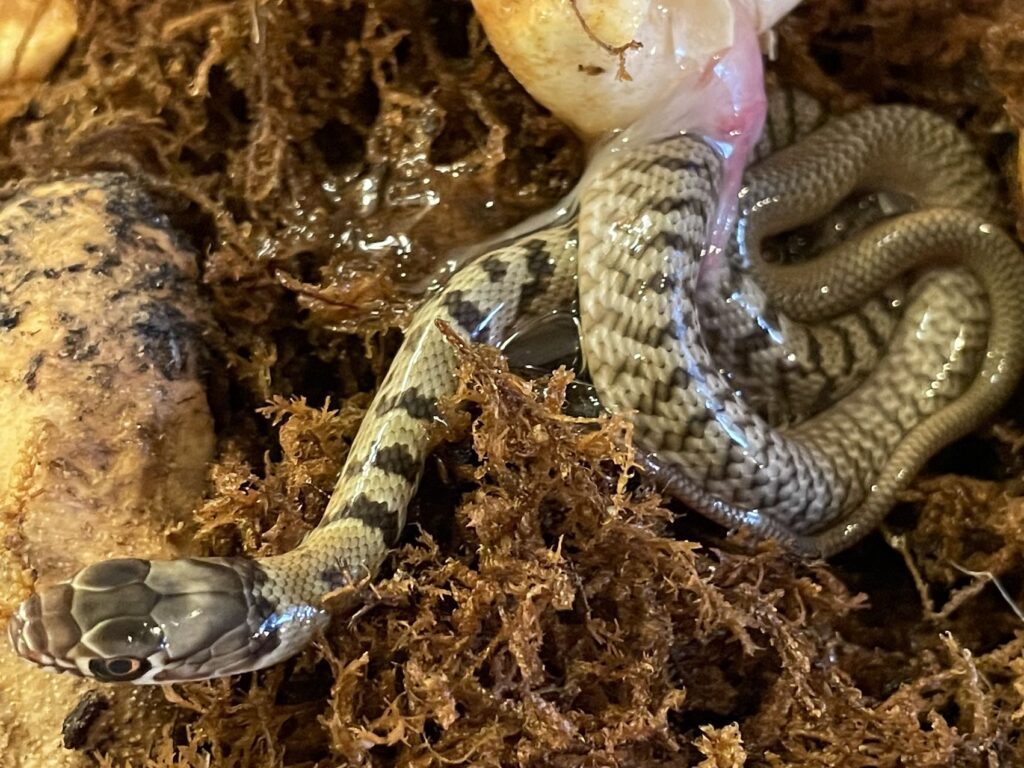
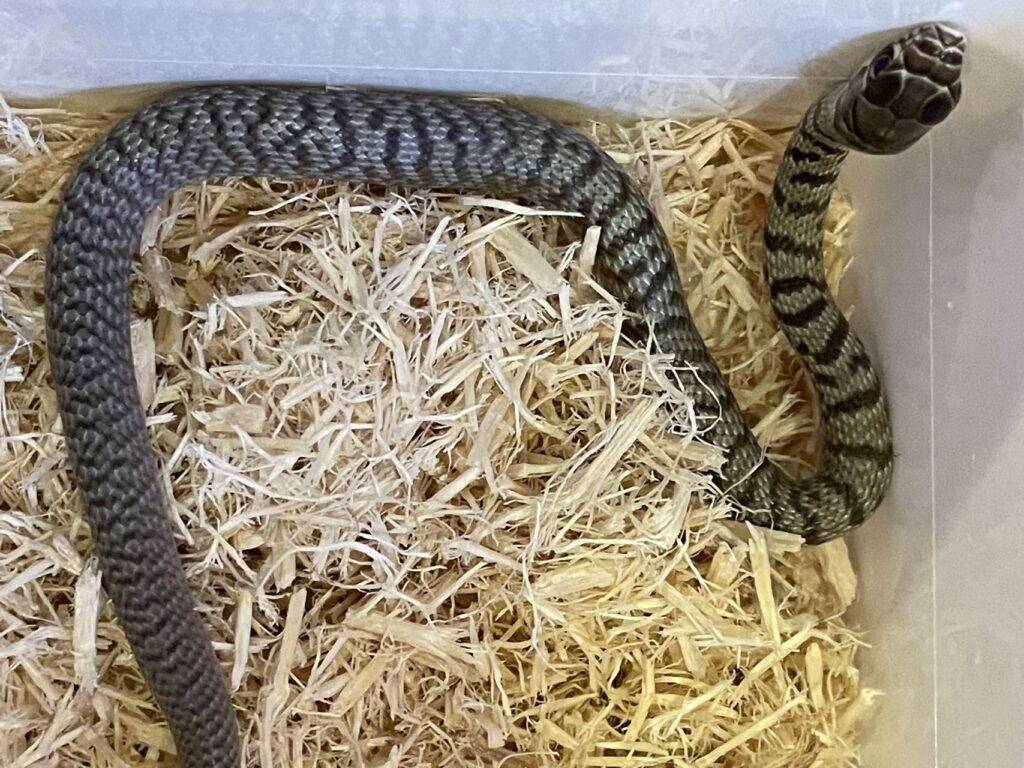
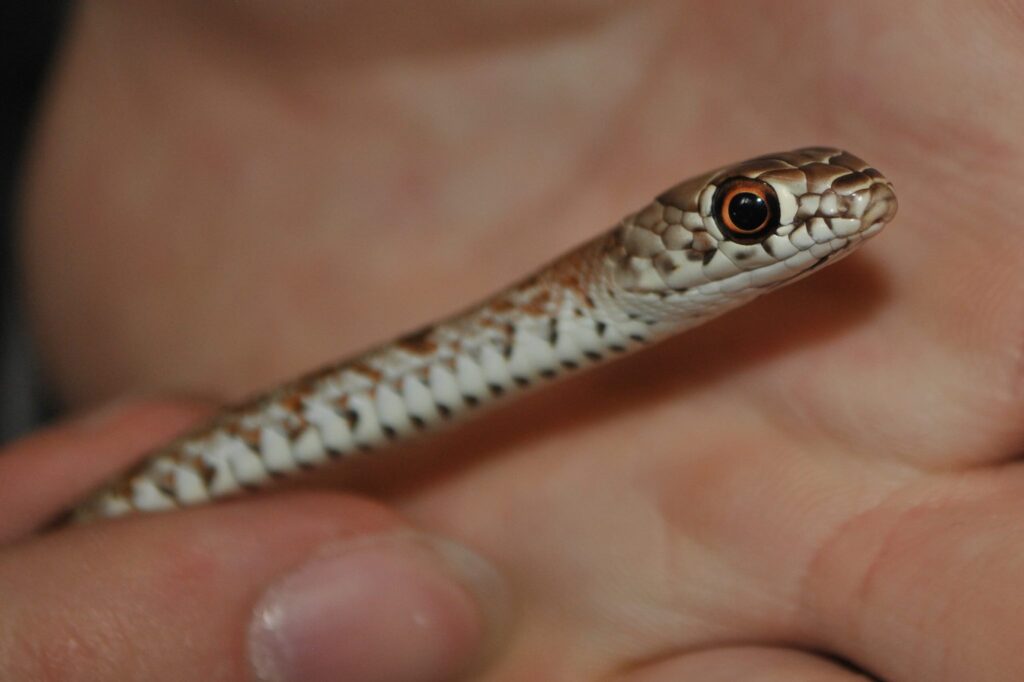
Nature’s Imitation Game: Emerald Tree Boas and Green Tree Pythons
High in the forests of South America and the Indonesian archipelago, jewel-toned snakes drape themselves…
The Wall Lizards of Ventnor Botanic Garden
Tucked away on the sun-soaked southern coast of the Isle of Wight, UK lies a…
Thinking Like a Snake: Field Insights into Emerald Tree Boa Husbandry
Among keepers, few snakes inspire as much awe as the emerald tree boa (Corallus sp.)….
Herping Arizona Monsoons 2025 – Part One
Arizona encompasses vast stretches of Sonoran, Colorado, and Mojave Deserts. It’s scattered with 10,000-foot-high mountains…
“Extinct” Doves Hatch at Chester Zoo
Eight chicks belonging to a dove species that has been extinct in the wild for decades…
Naming Nature: Where Taxonomy Meets Pop Culture
From David Bowie’s lightning bolt immortalised in the iridescent fur of a spider, to Jackie…
